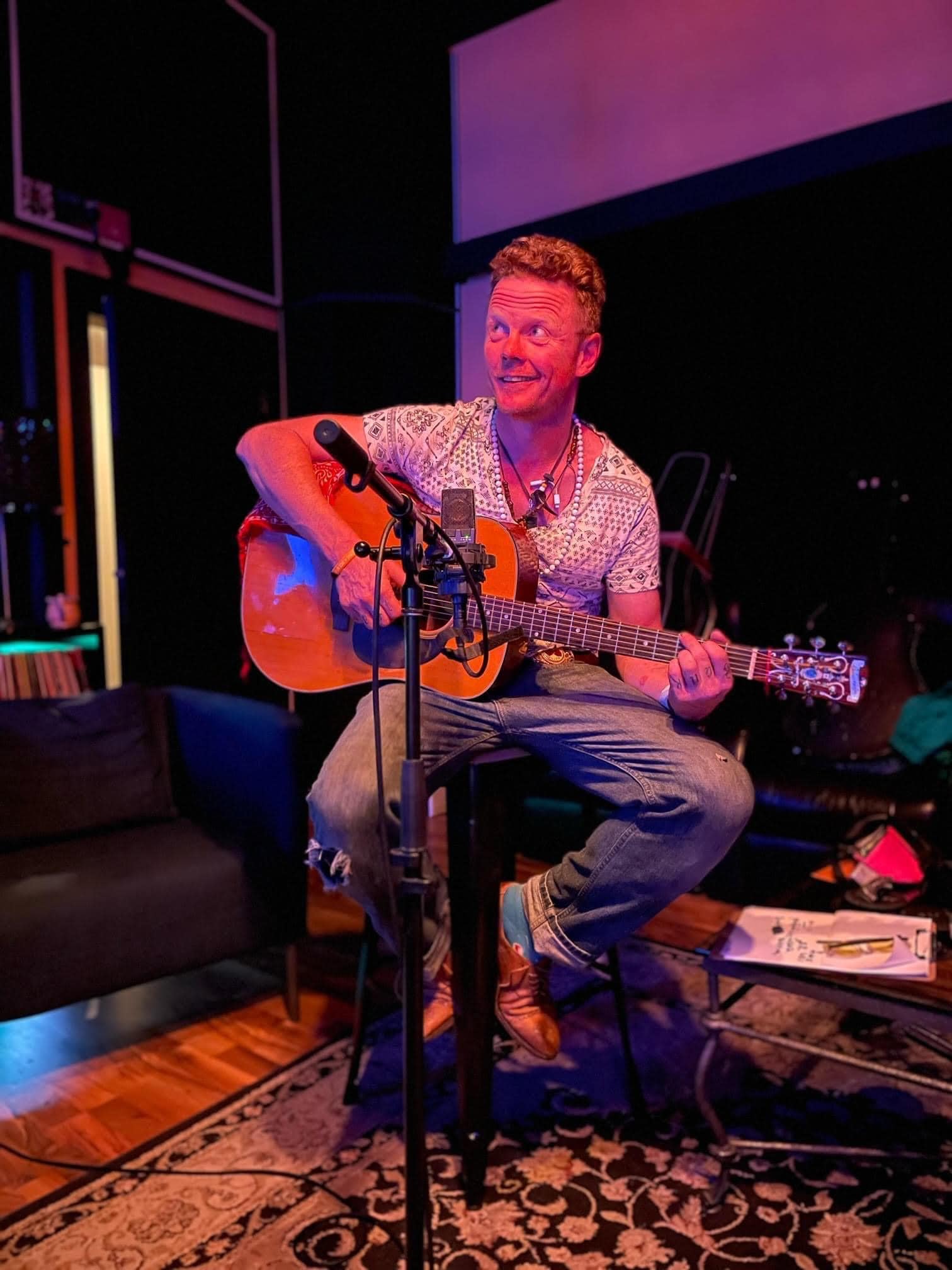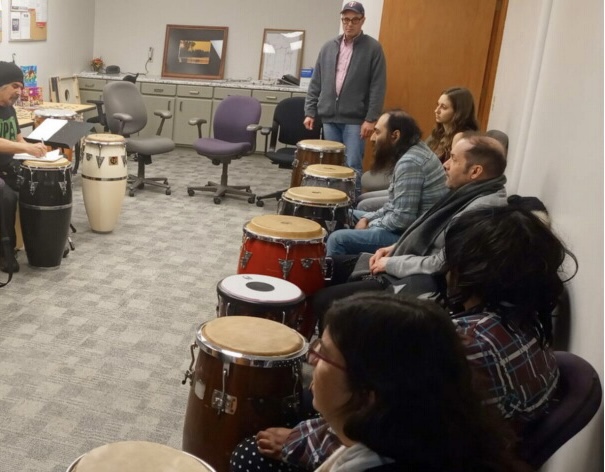Blog
Oliver Jackson (April 28, 1933 – May 29, 1994), also known as Bops Junior, was an American jazz drummer.
Jackson was born in Detroit, Michigan, United States, where he played in the 1940s with Thad Jones, Tommy Flanagan, and Wardell Gray, and had a variety show with Eddie Locke called Bop & Locke. After working with Yusef Lateef from 1954 until 1956, he moved to New York, where he played regularly at the Metropole in 1957 and 1958. Following this he worked with Teddy Wilson, Charlie Shavers (1959–61), Buck Clayton, Benny Goodman(1962), Lionel Hampton (1962–64), Kenny Burrell, Earl Hines (1964–70 intermittently) and the JPJ Quartet with Budd Johnson. Later in life he played with Sy Oliver (1975–80), Oscar Peterson, and George Wein‘s Newport All-Stars. As a bandleader, Jackson led a 1961 date in Switzerland, and recorded at least five albums for Black & Blue Records between 1977 and 1984.
His brother, bassist Ali Jackson, performed with him both at the beginning and towards the end of their careers. His nephew, Ali Jackson Jr., is a jazz drummer.
Jackson died from heart failure in New York City at the age of 61.
more...Prudencio Mario Bauzá Cárdenas (April 28, 1911 – July 11, 1993) was an Afro-Cuban jazz, Latin, and jazzmusician. He was among the first to introduce Cuban music to the United States by bringing Cuban musical styles to the New York City jazz scene. While Cuban bands had had popular jazz tunes in their repertoire for years, Bauzá’s composition “Tangá” was the first piece to blend jazz harmony and arranging technique, with jazz soloists and Afro-Cuban rhythms. It is considered the first true Afro-Cuban jazz or Latin jazz tune.
As a child he studied clarinet becoming recognized as a child prodigy on the instrument and was featured with the Havana Symphony at the age of 11. Bauzá then performed on clarinet and bass clarinet with pianist Antonio María Romeu‘s charanga (flute and violins) orchestra. This proved a fateful event as the orchestra visited New York City to record in 1926. Bauzá’s stayed with his cousin, trumpeter René Endreira, who was a Harlem resident and played with The Santo Domingo Serenaders, a band was made up of Panamanians, Cubans, and Puerto Ricans playing jazz. The teenage Bauzá was impressed with Harlem’s African American community and the freedom they had.
more...It’s a 12 count, but unlike the other 12 count palos, this one tends to start on 1 rather than the 12 for the letra. Also, the end of the compás is emphasized.
1 – 2 – 3 – 4 – 5 – 6 – 7 – 8 – 9 – 10 – 11 –12
The structure of a dance of Solea is similar to all the others:
- Salida (singer & guitarist start, dancer makes entrance)
- Llamada (rhythmical accent from dancer that “calls” the singer to sing)
- 1st Letra (1st verse)
- Llamada
- 2nd Letra
- Falseta (guitar interlude)
- Escobilla (footwork section)
- Bulería (fast ending letra)
- Estribillo (chorus that the dancer ends with)
Of course, there are many variations to this structure. There can be more letras and falsetas. Or there can be more spots for different escobillas. The dancer could even add a letra of Solea por Bulerías after the letras of Solea and before the Bulería. Options!!! Choices!!!
more...The first Preview Night and Pay-What-You-Can night for The Defeat of Jesse James at the History Theater in St Paul. Music with Raymond Berg, Kam Markworth, Christian Wheeler and mick laBriola.

The Tarantula Nebula, also known as 30 Doradus, is more than a thousand light-years in diameter, a giant star forming region within nearby satellite galaxy the Large Magellanic Cloud. About 160 thousand light-years away, it’s the largest, most violent star forming region known in the whole Local Group of galaxies. The cosmic arachnid is near the center of this spectacular image taken during the flight of SuperBIT (Super Pressure Balloon Imaging Telescope), NASA’s balloon-borne 0.5 meter telescope now floating near the edge of space. Within the well-studied Tarantula (NGC 2070), intense radiation, stellar winds and supernova shocks from the central young cluster of massive stars, cataloged as R136, energize the nebular glow and shape the spidery filaments. Around the Tarantula are other star forming regions with young star clusters, filaments, and blown-out bubble-shaped clouds. SuperBIT’s wide field of view spans over 2 degrees or 4 full moons in the southern constellation Dorado
more...
Denzil DaCosta Best (April 27, 1917 – May 24, 1965) was an American jazz percussionist and composer born in New York City. He was a prominent bebop drummer in the 1950s and early 1960s.
Best was born in New York City, into a musical Caribbean family originally from Barbados. Trained on piano, trumpet, and bass, he concentrated on the drums starting in 1943. Between 1943 and 1944, he worked with Ben Webster, and subsequently with Coleman Hawkins (1944–45), Illinois Jacquet (1946) and Chubby Jackson. The drummer was known to sit in at Minton’s Playhouse. He took part in a recording with George Shearing in 1948 and was a founding member of his Quartet, remaining there until 1952. In 1949, he played on a recording session with Lennie Tristano for Capitol and also recorded later with Lee Konitz.
In a 1953 car accident he fractured both legs and was forced into temporary retirement until 1954, when he played with Artie Shaw, and then in a trio with Erroll Garner (1955–57), including Garner’s live album Concert by the Sea. Best subsequently played with Phineas Newborn, Nina Simone, Billie Holiday and Tyree Glenn, and in October 1962 appeared on the first album by Sheila Jordan (Portrait of Sheila). He suffered from paralysis after this and was no longer able to play; he died aged 48 in 1965, after falling down a staircase in a New York City Subway station.
more...Conrad Henry Kirnon (April 27, 1927 – November 30, 1994) known professionally as Connie Kay, was an American jazz and R&B drummer, who was a member of the Modern Jazz Quartet.
Self-taught on drums, he began performing in Los Angeles in the mid-1940s. His drumming is recorded in The Hunt, the recording of a famous Los Angeles jam session featuring the dueling tenors of Dexter Gordonand Wardell Gray on July 6, 1947. He recorded with Lester Young‘s quintet from 1949 to 1955 and with Stan Getz, Coleman Hawkins, Charlie Parker, and Miles Davis.
Kay did R&B sessions for Atlantic Records in the early to mid-1950s, and he was featured on hit records such as Shake, Rattle and Roll by Big Joe Turner and Ruth Brown‘s (Mama) He Treats Your Daughter Mean.
Kay joined the Modern Jazz Quartet in 1955, replacing original drummer Kenny Clarke. He remained through the group’s dissolution in 1974 and occasional reunions into the 1990s. In addition to his MJQ compatriots, he had an enduring partnership with cool jazz altoist Paul Desmond through the first half of the 1960s. He played drums on several of Irish singer-songwriter Van Morrison‘s albums: Astral Weeks, one song on Saint Dominic’s Preview, and four songs on Tupelo Honey.
more...(PIERCE COUNTY, Wis. (KTTC) – A body was discovered in the Mississippi River Sunday afternoon in Pierce County, Wisconsin.
According to the Goodhue County Sheriff’s Office (GCSO), it received a report at 4:44 p.m. that a kayaker discovered a body in the Mississippi River, north of Diamond Bluff.
The body was located floating in what would typically be an inland area but was currently flooded because of the high water on the Mississippi River. The body had been in the water for an undetermined amount of time.
The Southern Minnesota Regional Medical Examiner’s Office positively identified the body Tuesday as 42-year-old Isaac Paul Russell-Hart. He was a missing person out of Minneapolis who was last seen on March 13, 2023.
GCSO was assisted at the scene by the Pierce County Sheriff’s Office and Wisconsin DNR.)

Teaching world drumming workshops at Tasks Unlimited 11am-1230pm (Tasks Unlimited provides supported employment, housing and recovery services to create opportunities for people with mental illness so they can achieve their full potential.) in Minneapolis and Cerenity Humboldt Senior Care Center (Cerenity Humboldt offers Assisted Living, Memory Care, Skilled Nursing, Rehabilitation and Hospice care services.) in St Paul 130-3pm

The Rosette Nebula (also known as Caldwell 49) is an H II region located near one end of a giant molecular cloud in the Monoceros region of the Milky Way Galaxy. The open cluster NGC 2244 (Caldwell 50) is closely associated with the nebulosity, the stars of the cluster having been formed from the nebula’s matter.
The nebula has been noted to be having a shape reminiscent of a human skull, and is sometimes referred to as the “Skull Nebula.” It is not to be confused with NGC 246, which is also nicknamed the “Skull Nebula.
- NGC 2237 – Part of the nebulous region (Also used to denote whole nebula)

Lakshminarayana Shankar (born 26 April 1950), better known as L. Shankar, Shankar and Shenkar, is an Indian violinist, singer and composer.
Shankar was born in Madras, India, and raised in Ceylon (current-day Sri Lanka), where his father V. Lakshminarayana, a violinist and singer, worked as a teacher at the Jaffna College of Music. He learned to play the violin and first performed in public in a Ceylonese temple at the age of seven. In 1969, he went to the United States, where he studied ethnomusicology at Wesleyan University. After performing with various Indian singers for several years, Shankar founded a trio with his brothers, L. Vaidyanathan and L. Subramaniam, that performed throughout India.
more...Preston Haynes Love (April 26, 1921 – February 12, 2004) was an American saxophonist, bandleader, and songwriter from Omaha, Nebraska, United States, best known as a sideman for jazz and rhythm and blues artists like Count Basie and Ray Charles.
Preston Love grew up in North Omaha and graduated from North High.
He became renowned as a professional sideman and saxophone balladeer in the heyday of the big band era. He was a member of the bands of Nat Towles, Lloyd Hunter, Snub Mosley, Lucky Millinder and Fats Wallerbefore getting his big break with the Count Basie Orchestra when he was 22. Love played and recorded with the Count Basie band from 1945–1947, and played on Basie’s only No. 1 hit record, “Open The Door Richard.”
more...Theodore Marcus “Teddy” Edwards (April 26, 1924 – April 20, 2003) was an American jazz tenor saxophonist.
Edwards was born in Jackson, Mississippi, United States. He learned to play at a very early age, first on alto saxophone and then clarinet. His uncle sent for him to come to Detroit to live because he felt opportunities were better. Due to illness in the family, he went back to Jackson and ventured to Alexandria, Louisiana. He was persuaded by Ernie Fields to join his band after going to Tampa, Florida. Edwards had planned to go to New York City, but Fields convinced him he could get there by way of Washington, D.C., if he worked with his band.
more...John Ned Shines (April 26, 1915 – April 20, 1992) was an American blues singer and guitarist.
Shines was born in the community of Frayser, in Memphis, Tennessee. He was taught to play the guitar by his mother and spent most of his childhood in Memphis, playing slide guitar at an early age in juke joints and on the street. He moved to Hughes, Arkansas, in 1932 and worked on farms for three years, putting aside his music career. A chance meeting with Robert Johnson, his greatest influence, gave him the inspiration to return to music. In 1935, Shines began traveling with Johnson, touring in the United States and Canada. They parted in 1937, one year before Johnson’s death.
more...More Posts
- The Cosmos with NGC 5866
- Steve Goodman Day
- Don Ellis Day
- World Music with Yuva Ratna Deepak Mehta
- Daily Roots with King Tubby
- The Cosmos with NGC 1569
- Charles McPherson Day
- Billy Taylor Day
- World Music with La Refrescante Banda Aljibe
- Daily Roots with Freddie McGregor
- The Cosmos with NGC 3359
- L. Subramaniam Day
- Steve Lacy Day
- World Music with Los Ruphay
- Daily Roots with Playing for Change
- The Cosmos with Berkeley 59
- Al Di Meola Day
- Junior Cook Day
- World Music with Deepak Ram
- Daily Roots with Bunny Wailer